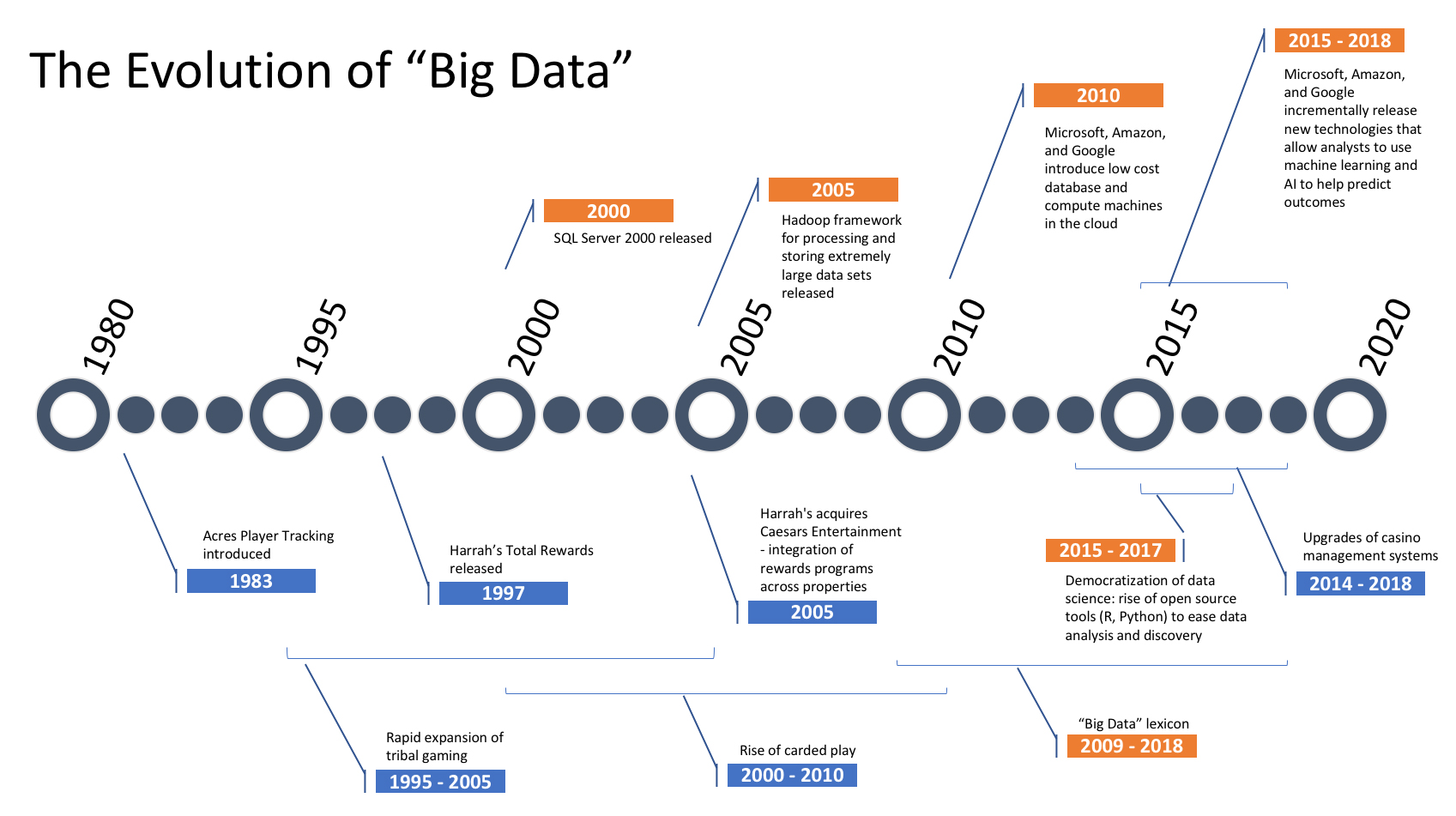
Why Now? The History of Big Data
Recently I spoke at the National Indian Gaming Association’s annual conference. I was a speaker and a moderator on several panel discussions related to analytics and Big Data along with other Ravers, including Raving CEO, Deana Scott. At these events, I’m often asked the question, “Why now?
Why is gaming analytics more relevant today than ever before?” We are at the precipice of some of the biggest changes occurring in gaming. So, it’s worthwhile to recount the history of gaming analytics and why casino marketers need to pay attention now.
If you go back into the annals of gaming history, the idea of “Big Data” in casinos may have originated with the measurement of slot play in the late 1960s and early 1970s. As the lore is told, Harrah’s in Reno ran a “Premium Points” promotion as one of the industry’s first player loyalty programs. Harrah’s employees watched players wager on slot machines and issued a paper coupon for every $20 played. Tickets could be exchanged for prizes such as toasters, transistor radios, and televisions.
Given that this program was manually tracked, it was fraught with inaccuracies and high administrative costs. In early 1983, the Golden Nugget in Las Vegas improved on the Premium Points concept by installing automatic ticket dispensers on each of its dollar slot machines. For every $50 wagered, a ticket was issued. By automating play measurement in this way, the Golden Nugget greatly reduced program costs while more accurately measuring player worth.
In the following decade, Harrah’s introduced the Total Rewards program, ultimately becoming the Gold Standard for player loyalty programs that others copied. The rise in carded play changed the way casinos looked at players, their preferences, and their spending habits. Suddenly, players could be identified and segmented based on their activities, level of play, and worth to the casino. Incentives could be offered with greater precision. To support carded play, player tracking systems evolved allowing for the historical recording of player behavior over time. Microsoft SQL Server quickly became the industry’s defacto database standard for most player tracking systems.
But even with large volumes of data being recorded at an incredible velocity, the best efforts of operators to leverage data fell by the wayside. Marketers faced challenges accessing their own data coupled with cumbersome and expensive software that made it difficult to reveal actionable insight. As gaming markets became increasingly more competitive, the insight hidden in all of that data, suddenly became that much more valuable.
Today, we’ve entered a new era where the latest analytics and data science tools are available to marketers at a price point significantly cheaper. Moreover, the types of questions being asked of the data can be more effortlessly extracted. Imagine predicting which player populations will have a material impact to the bottom line of the business. This democratization of information is empowering marketers to execute at unparalleled speed and efficiency. And this is only the beginning …
How should you prepare?
- Be clear on what insights you want extracted from your data and the desired action that follows.
- Invest in new data science and analytics skills for your team to create a data-centric culture.
- Before buying new technology, evaluate what you currently own. You may already own some data science technologies and not realize it, or you may find that those existing investments are underutilized.
We’ve come a long way from the days of Premium Points. The gaming advances in the next several years will arrive much faster. Will you be prepared?







